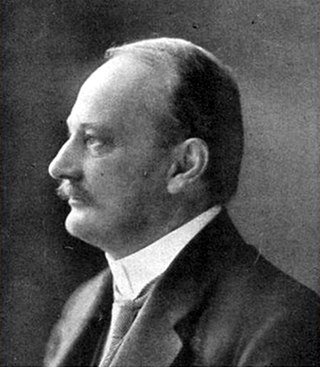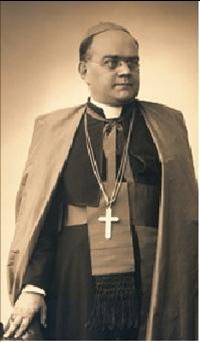
Ferencvárosi Torna Club, commonly known as Ferencváros, Fradi, FTC or Kinizsi is a Hungarian professional football club based in Ferencváros, Budapest, that competes in the Nemzeti Bajnokság I, the top flight of Hungarian football. Ferencváros was founded in 1899 by Ferenc Springer and a group of local residents of Budapest's ninth district, Ferencváros. Ferencváros is best known internationally for winning the 1964–65 edition of the Inter-Cities Fairs Cup after defeating Juventus 1–0 in Turin in the final. Ferencváros also reached the final in the same competition in 1968, when they lost to Leeds United, as well as the final in the 1974–75 season of the European Cup Winners' Cup, losing to Dynamo Kyiv.
School social work is a specialized area of social work concerned with the psychosocial functioning of students to promote and maintain their health and well-being while assisting students to access their academic potential. The School Social Work Association of America defines school social workers as "trained mental health professionals who can assist with mental health concerns, behavioral concerns, positive behavioral support, academic, and classroom support.

The University of Pécs is one of the largest higher education institutions in Hungary. The history of the university began in the Middle Ages, when in 1367, at the request of King Louis I the Great, Pope Urban V granted permission to found the institution. This made it the first university in Hungary and the fourth in Central Europe. The official successor of the university is the Elisabeth University of Pozsony, founded in 1912. In 1921, after Bratislava became part of Czechoslovakia, the university was moved to Pécs in 1951, the Faculty of Medicine separated and existed as an independent institution, until it merged with the Janus Pannonius University in 2000, which united the other faculties in Pécs. This is how the current University of Pécs was created.

School Sisters of Notre Dame is a worldwide religious institute of Roman Catholic sisters founded in Bavaria in 1833 and devoted to primary, secondary, and post-secondary education. Their life in mission centers on prayer, community life and ministry. They serve as teachers, lawyers, accountants, nurses, administrators, therapists, social workers, pastoral ministers, social justice advocates and more.

Gyula Illyés born Gyula Illés was a Hungarian poet and novelist. He was one of the so-called népi writers, named so because they aimed to show – propelled by strong sociological interest and left-wing convictions – the disadvantageous conditions of their native land.

Sashegy is a hill and neighbourhood in Budapest, Hungary. It is a green, upper middle class area in Buda with expensive family homes. Administratively Sashegy is divided between the 11th and the 12th districts of Budapest.

László Rátz was a Hungarian mathematics high school teacher best known for educating such people as John von Neumann and Nobel laureate Eugene Wigner. He was a legendary teacher of "Budapest-Fasori Evangélikus Gimnázium", the Budapest Lutheran Gymnasium, a famous secondary school in Budapest in Hungary.

Budapest Metropolitan University is an accredited private institute of higher education in Budapest, Hungary. It is formally known as the Budapest Metropolitan University or budapesti Metropolitan Egyetem.

The Varga Katalin Secondary School is a secondary school in Szolnok, Hungary established in 1930, which was named after Katalin Bánffy between 1936 and 1951. It is located in the former Obermayer-Hubay apartment house, which is one of the oldest buildings in the town. Its address is Szabadság tér 6, near the confluence of the Tisza and Zagyva rivers.
The Pécs Model of School Social Work is a model for social work that was developed in the city of Pécs, Hungary, by INDIT Közalapítvány, a Hungarian non-governmental organisation. The model is aimed at helping pupils acquire social competences. According to this model, the school social worker gets and keeps in touch both with the child, the family and the school. Within the Pécs model the school social worker is employed by an NGO independent from the school. The NGO builds and co-ordinates a network of the school social workers and supervises their work. The school social workers work full-time in their schools. Most of their work time is spent there; except when they visit families, do case management work, or partake in team discussions. They have their own office in the school, which makes them known as a member and supporter of the school community.

Hildebrand Dezső Várkonyi was a monk and a teacher of Bencés order. Várkonyi was a respected and well-known Hungarian philosopher, pedagogue and psychologist.

Dr. Gusztáv Bölcskei is a Hungarian Reformed bishop and a theologian. He is the former clerical president of the Synod of the Reformed Church in Hungary and bishop of Debrecen. Bölcskei is Executive Committee Member of the World Communion of Reformed Churches, former president of WCRC Europe, and a professor of church sociology at Debrecen Reformed Theological University.

János Nyíri was a theatre director, journalist and writer. He wrote several highly acclaimed plays and novels, including Battlefields and Playgrounds, recognized by The Observer as the most important novel written by a survivor of the Holocaust.

István Stumpf is a Hungarian lawyer, political scientist, sociologist, university professor, political science PhD, former constitutional justice at the Constitutional Court of Hungary. From 1991 to 1994 he was the youth policy adviser to the president of the Republic Árpád Göncz. He also served as minister of the Prime Minister's Office from 1998 - 2002 in the first cabinet of Viktor Orbán. In the beginning of 2021 February he was appointed for a term of 2 years as government commissioner responsible for model change of universities. He was appointed president of the board of the foundation maintaining the newly founded University of Tokaj. This year he was appointed to be a member of Government Committee for Rural Development.

Gyula Koi is a Hungarian legal scholar and lecturer. His main research fields are administrative law, and theory of public administration. His Chinese name is Guo Yi.

Zoltán Lajos Meszlényi was a Hungarian Catholic bishop, born in Hatvan on 2 January 1892. He died in prison on 4 March 1951 at Kistarcsa, Hungary. His death is recognised as martyrdom by the Catholic Church. He was beatified on 31 October 2009.

Zoltán Zubornyák is a Hungarian actor, culture manager, theatre manager, director, volunteer, art director.

Szidi Rákosi was a Hungarian actress and acting teacher. Her relatives included Béla Rákosi, Jenő Rákosi, Viktor Rákosi and Ida Rákosi, the wife of Lajos Evva.

Valéria Dienes was a Hungarian philosopher, dancer, dance instructor, choreographer and one of first Hungarian woman to graduate from university. She is widely considered to be one of the most important Hungarian theorists on movement. She was the recipient of Hungary's highest literary award, the Baumgarten Prize in 1934.

The Galileo Circle was an atheist-materialist student organization that functioned in Budapest between 1908 and 1919. Their center was located at the Anker Köz in Terézváros, Budapest. The circle had several subgroups with four different world views: the radical liberals, the Marxists, the anarcho-syndicalists and the socialists. However they had common goals, which included the protection of free scientific research and thinking at universities, the cultivation of social sciences, the social assistance of poor students, the spread of anti-clericalist and atheist views, the support of anti-nationalism and promoting internationalism, the propagation of anti-alcoholism, the opposition to large estates and the "reorientation of Hungarian social perception".

















